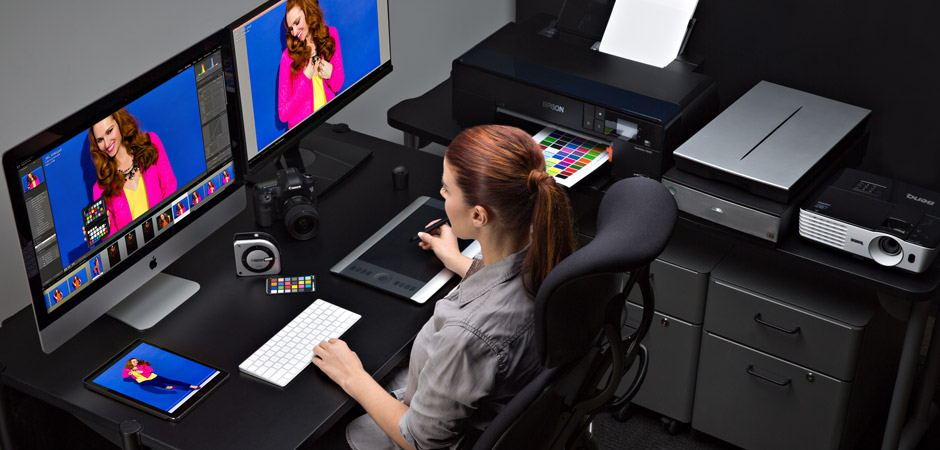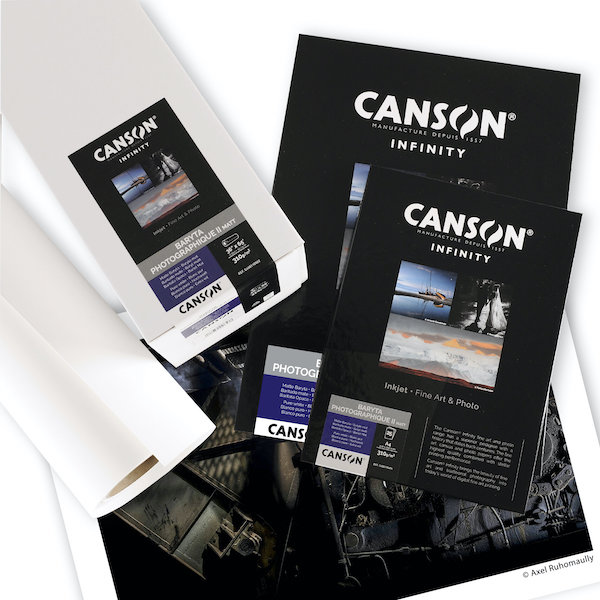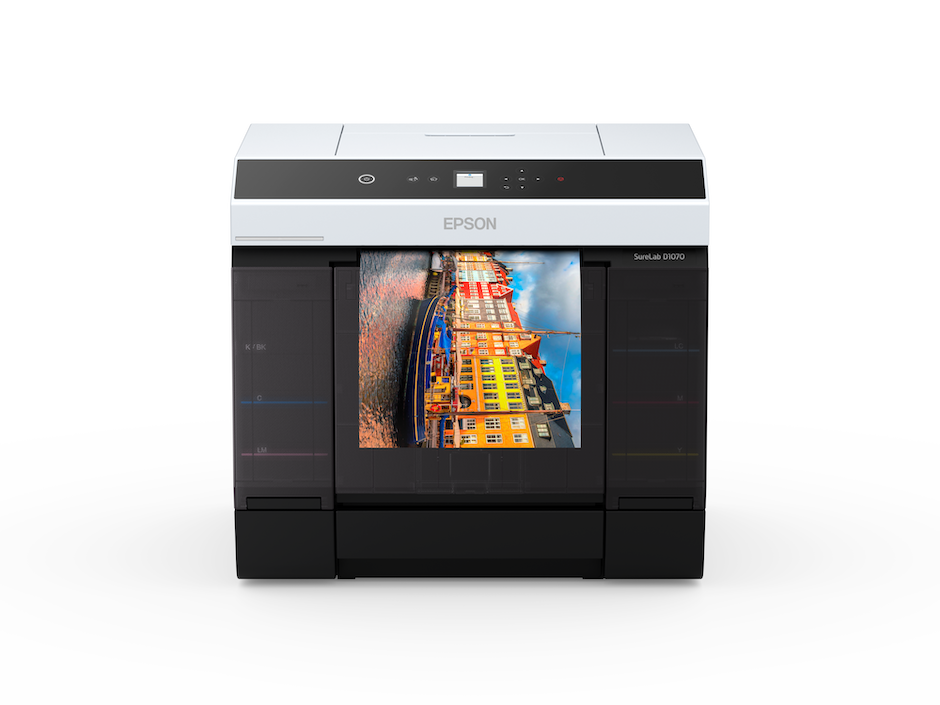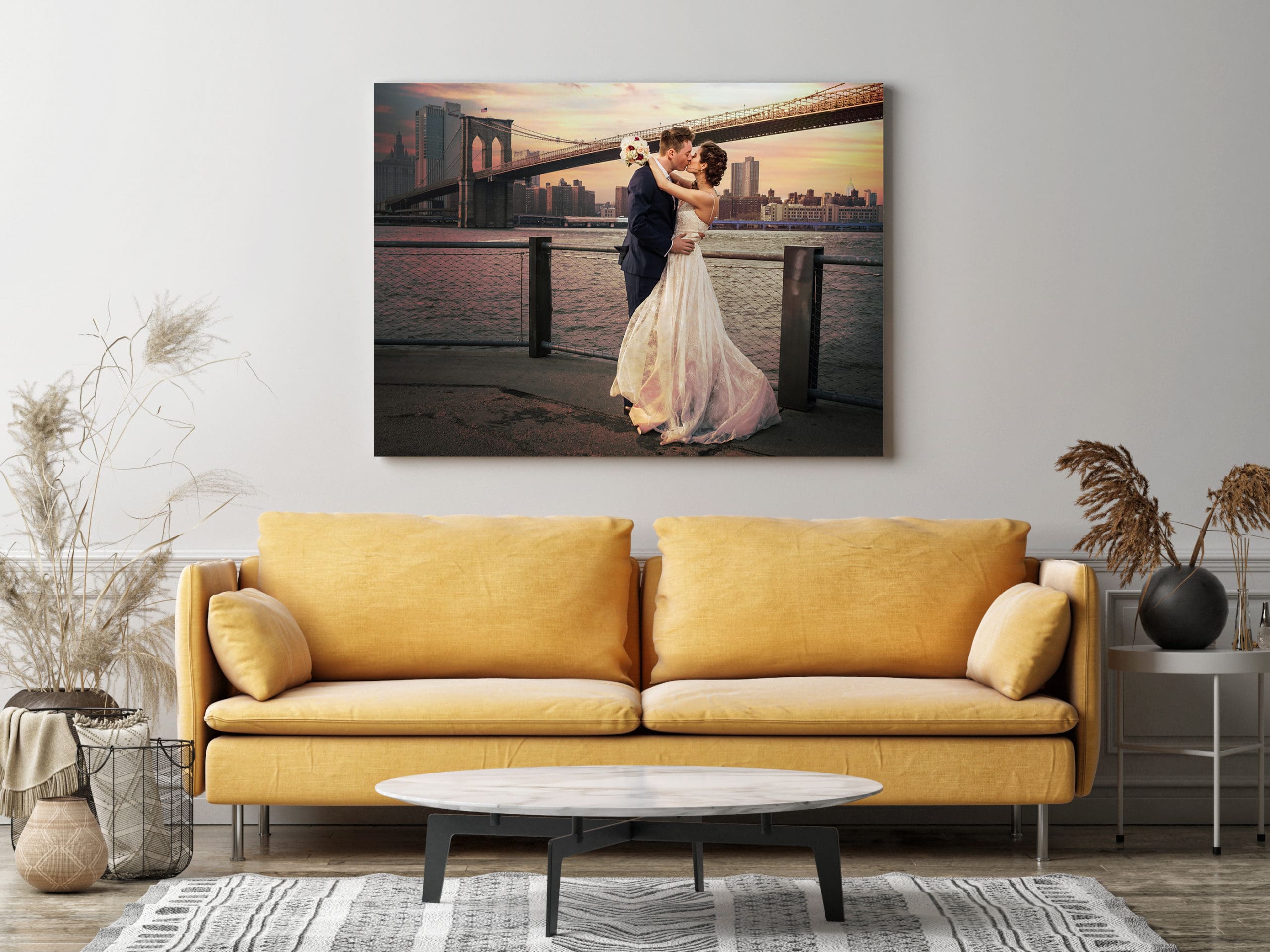Power of Print
JPEGs Work Just Fine
You may be tempted to submit TIFF files because their larger size is suggestive of a higher-quality image file, but some labs suggest high-resolution JPEG files work just as well. What you shouldn’t do, warns Bay Photo President Larry Abitbol, is try to upscale lower-res images in the hopes of achieving a larger print size.
Make sure your JPEGs are in the sRGB or RGB color space—the overwhelmingly likelihood is that they are. “If there’s no color profile in the file, we always assume it’s sRGB,” says Jan-Ole Schmidt, product manager at WhiteWall. That said, you can embed your own profile, which the lab would use to determine colors.
Acrylic Press recommends using Photoshop to assign an Adobe RGB color space to your image, since it offers a wider color gamut than sRGB, says Guile Elias, the company’s sales and customer service manager.
“We request level 10 JPEGs in the Adobe RGB color space, but sRGB works too,” notes Greg Davis, manager of new product development and quality assurance at White House Custom Colour (WHCC). JPEG compression levels are rated on a scale of 0 to 12 with 12 being the least compressed (and therefore the highest quality). You can typically set this compression scale when exporting, though some programs just represent it as a sliding scale between high and low quality.
When you submit JPEGs, don’t pre-crop them to fit a given print aspect ratio, Bay Photo’s Abitbol says. “It’s better to use our cropping tools on the website,” for a more accurate fit. Elias of Acrylic Press agrees. “If you order through ROES software,” he adds, “there are templates for cropping.”
No Need to Overdo DPI
The absolute highest resolution that WhiteWall will print is 300 DPI, so it doesn’t make sense to send files at a higher-resolution than that, Schmidt says. If you plan on printing larger wall art pieces over 20 inches, where a person has to stand back a bit to admire it, DPI is far less critical, he notes. 300 DPI is also the target for WHCC.
For Miller’s Lab, 250 DPI is usually a reasonable target for most printed products, says Gene Worsley, the company’s senior technical analyst. A minimum of 240 DPI works for Acrylic Press.
Soft Proof
Some labs will make ICC profiles available to end users so they can preview what a given image will look like on the various media types a lab offers. A soft proof can help you identify color issues with a given media and your image before you commit it to print. For WhiteWall, those ICC profiles are available for download on the site. For Miller’s, ICC profiles can be obtained by calling the lab, though Worsley stresses that for most users, simply calibrating their monitors will go a long way toward getting the print they desire.
If the option is available, you can also order a sample print to test out your photo on a given media. WhiteWall lets photographers order a print with a watermark for 60 percent off its retail price for proofing purposes. While you can’t order proofs for more exotic materials like metal or wood, it is an option for photographers printing on photographic or inkjet output. Acrylic Press also offers a 5 x 7-inch print sample for proofing purposes—you only pay shipping.
Monitors Matter
One of the biggest complaints labs hear from customers, Worsley says, is that the photo a photographer sees on their monitor isn’t the same as the print they’ve received in the mail. Schmidt from WhiteWall concurs. One of the main reasons for this mismatch is because the default setting on most modern monitors pumps up the brightness and contrast beyond what a printed image can produce.
“A print has no backlighting,” Schmidt explains, “so you have to calibrate your monitor to get an accurate preview of what a print will look like.”
Beyond properly calibrating your monitor, Worsley suggests investing in a monitor that can display the entire sRGB and RGB color space. “Photographers buy great cameras and lenses and lights, but they should also invest in a quality monitor if they’re serious about printing their work,” Worsley says. These monitors are capable of accurately displaying a wide range of colors and often include tools to aid in calibration.
Part of the on-boarding process at WHCC involves a walk-through of monitor calibration and test printing to ensure a photographer is set up for success, Davis says. “Where we see issues is in the files people choose for test prints,” he explains. “Sometimes they’re not indicative of the kind of work a photographer does regularly.”
Watch the Whites
One does need to take care when printing images with a lot of white on inkjet paper, Schmidt cautions. Printers don’t typically print white. Instead, it’s the actual color of the paper you’re seeing when you see white in an image. If the paper has a yellowish tint, the whites of your image are going to take on that yellowish color cast.
Fortunately, inkjet media companies disclose the whiteness of their papers in the product specs. Whiteness is ranked on a scale usually from 80 percent (less white) up to values of 100 percent. You can push above 100 percent, though the paper will then be typically using an optical brightener agent (OBA). OBAs are chemical additives that basically make the paper fluoresce, or emit blue spectrum light, which, to the human eye, looks like a bright white.
Papers with OBAs can be tricky to profile since measurement devices, which are more sensitive than the human eye, can pick up on the blue spectrum and correct for it, giving the resulting print a yellowish cast. OBAs also lose their fluorescence over time, so papers with OBAs tend to lose whiteness as the years pass. (That’s why many fine-art papers boast of being OBA-free.)
The Tools
SpectraCal C3
This colorimeter gives you an accurate monitor profile without pilfering your wallet. It uses four-color correction matrix technology and features color and light filters. The C3 includes a counterweight so you can balance it over your flat panel display. You can pair the C3 hardware with profiling software, including the $199 CalMAN RGB, which offers one-click calibrations and before/after comparisons so you can view your monitor changes. It also supports multiple profile settings per monitor and comes with three client licenses. Note it’s Windows-only, though.
Price: $149
calman.spectracal.com
EIZO Quick Color Match
If you own an EIZO display, this free software app was developed with Adobe, Canon and Epson to help photographers quickly ensure their monitor is tuned to an appropriate paper type. The software automatically adjusts the monitor’s gain, brightness, gamma and color space and saves them as a profile that’s matched to a given paper (the full list of papers is available on the EIZO site). Images can be dragged into Color Match, which opens them in Photoshop with the desired monitor settings already applied so you’re working in the correct color space for your output type.
Price: free
eizoglobal.com
X-Rite i1Studio
This is a complete color management kit that includes a new spectrophotometer to profile monitors, projectors, scanners, mobile devices and printers. There’s also new iStudio software for creating and saving color profiles of your various devices. It offers a new black-and-white print module that creates five custom profiles for black-and-white images.
DataColor Spyder5
This colorimeter calibrates your monitor in just 5 minutes out of the box, with subsequent calibrations finishing under 3 minutes. An Express version offers a colorimeter with two fixed calibration settings. The SpyderPRO kit features 16 calibration settings and lets you perform before-and-after reviews using your own images, not just Datacolor presets. The Pro version also features ambient light monitoring in three settings. The Spyder5ELITE builds off the Pro by adding an unlimited number of calibration settings, including user-defined and Rec. 709 options for videographers. It can calibrate front projectors in addition to monitors and laptops and offers five ambient light settings. You’ll also get a full-screen option for comparing calibration images.
Prices: $129 (express), $189 (pro), $279 (elite)
datacolor.com
Related: The Power of Print Prevails
Crash Course To Seamless Color









